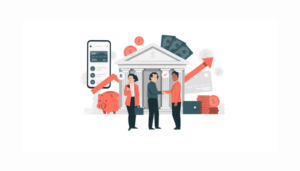Loans for charity offer a unique way for nonprofits to access funding without the usual financial pressures. These loans are designed to support social causes with lower interest rates and flexible repayment terms, helping charities stay focused on their missions.
With benefits like lower costs and extended repayment options, charity loans provide organizations with the financial stability they need to continue their vital work.
Want to learn how these loans can help charities thrive? Keep reading to explore the advantages and how to secure one for your cause.
How Loans for Charity Work
Loans for charity function similarly to regular loans but with specific terms tailored to nonprofit organizations. These loans offer flexible repayment structures, lower interest rates, and, in some cases, partial forgiveness to ensure that charities are not burdened with excessive debt. The key aspects of charity loans include:
- Purpose-Based Funding: Unlike commercial loans meant for profit generation, charity loans are intended to support social causes. These funds can be used for a variety of purposes, including expanding outreach programs, purchasing equipment, launching new community projects, or providing emergency relief.
- Lower Interest Rates: Many lenders recognize the social value of nonprofit work and offer significantly lower interest rates compared to standard loans. Some organizations also provide interest-free loans to selected charities.
- Flexible Repayment Terms: Lenders understand the financial challenges charities face and often provide repayment options that align with the organization’s cash flow. This might include longer repayment periods, grace periods, or even repayment holidays during difficult times.
- Eligibility Criteria: While each lender has specific requirements, most charity loans require organizations to be legally registered, have a clear mission statement, and demonstrate financial responsibility. Lenders may also assess the impact and sustainability of the proposed projects.
Charities that secure loans for charity can use them strategically to enhance their impact without relying solely on fluctuating donations.
Benefits of Loans for Charity in South Africa
The use of loans for charity offers multiple advantages for nonprofit organizations, allowing them to remain financially stable while pursuing their humanitarian goals. Below are some key benefits:
- Sustained Community Impact
Many charities rely on donations, which can be unpredictable and inconsistent. Loans for charity provide a stable funding source, ensuring that critical projects continue without disruptions. Whether building schools, supporting healthcare initiatives, or helping small businesses, these loans enable long-term social impact. - Encouraging Self-Sufficiency
Instead of relying solely on grants and donations, charities can use loans to create self-sustaining programs. For example, a nonprofit focused on youth employment could use a loan to establish a skills training center. The income generated from courses or vocational programs could then be used to repay the loan while expanding services. - Quick Access to Funds
Unlike waiting for donations or grant approvals, loans for charity provide immediate access to funds. This is particularly beneficial for emergency relief programs where quick action is needed, such as disaster response efforts or urgent healthcare interventions. - Flexible Repayment Options
Many lenders offer customized repayment plans to accommodate the financial realities of nonprofits. This includes options like deferred payments, lower monthly installments, and extended repayment periods. These flexible terms help charities focus on their mission without financial stress. - Building Creditworthiness
Just like businesses, nonprofits that responsibly manage loans for charity can build a strong credit profile. A good repayment history enhances their ability to secure future funding, whether through loans, grants, or partnerships with investors.
Where to Find Loans for Charity in South Africa
South African charities have multiple options when seeking loans for charity. Some of the most reliable sources include:
- Government Programs: Some South African government agencies provide special funding for nonprofit initiatives. These funds are often directed toward education, healthcare, and poverty alleviation projects.
- Nonprofit Loan Funds: Organizations such as the Development Bank of Southern Africa (DBSA) offer loans specifically tailored for charities, providing affordable financing options.
- Impact Investors: Some private investors and social impact funds provide loans with favorable terms to charities, focusing on long-term community benefits rather than short-term profits.
- Banks and Microfinance Institutions: Certain banks offer nonprofit-friendly loans, while microfinance institutions provide small, low-interest loans to help charities sustain their projects.
Each of these options comes with its own eligibility criteria, so charities should conduct thorough research before applying.
Challenges and Considerations for Charities Taking Loans
While loans for charity offer numerous benefits, nonprofits must also consider potential challenges before borrowing:
- Repayment Responsibility: Even with favorable terms, loans must be repaid. Charities should develop a clear repayment plan to ensure financial stability.
- Sustainability of Projects: Loan-funded projects should generate long-term benefits or revenue to cover repayments and prevent future funding gaps.
- Finding the Right Lender: Some lenders may have strict requirements or high-interest rates. Charities must carefully compare options to secure the best possible terms.
Proper financial planning and responsible borrowing can help nonprofits navigate these challenges successfully.
Success Stories: Charities Benefiting from Loans in South Africa
- Education Initiatives
A South African NGO used a charity loan to build a new school in a rural area, providing quality education to hundreds of children. With loan support, the school could purchase materials, hire teachers, and expand facilities. - Healthcare Programs
A nonprofit medical organization took a loan to buy medical equipment and mobile clinics, allowing them to reach remote communities with essential healthcare services. - Agricultural Development
A farming cooperative used a loan to buy seeds, equipment, and irrigation systems, helping small-scale farmers improve productivity and increase food security.
These examples highlight how loans for charity can create lasting, positive change in South Africa.
How to Apply for a Charity Loan in South Africa
To improve their chances of securing loans for charity, organizations should follow these steps:
- Assess Financial Needs: Clearly define how much money is needed and for what purpose.
- Create a Strong Business Plan: A well-structured plan helps lenders understand how the loan will be used and repaid.
- Research Lenders: Compare different lenders, focusing on interest rates, repayment terms, and eligibility criteria.
- Prepare Necessary Documents: Most lenders require financial statements, project proposals, and legal registration documents.
- Submit an Application: Complete the lender’s application process, ensuring all required information is provided.
Proper preparation can significantly increase a charity’s chances of obtaining a loan with favorable terms.
Conclusion: Loans for Charity as a Tool for Social Change
In South Africa, loans for charity are a powerful tool for supporting social causes. They provide much-needed financial support, allowing nonprofits to continue their work, expand their reach, and make a meaningful impact. With the right strategy, these loans can transform lives, uplift communities, and create a better future for South Africa.





